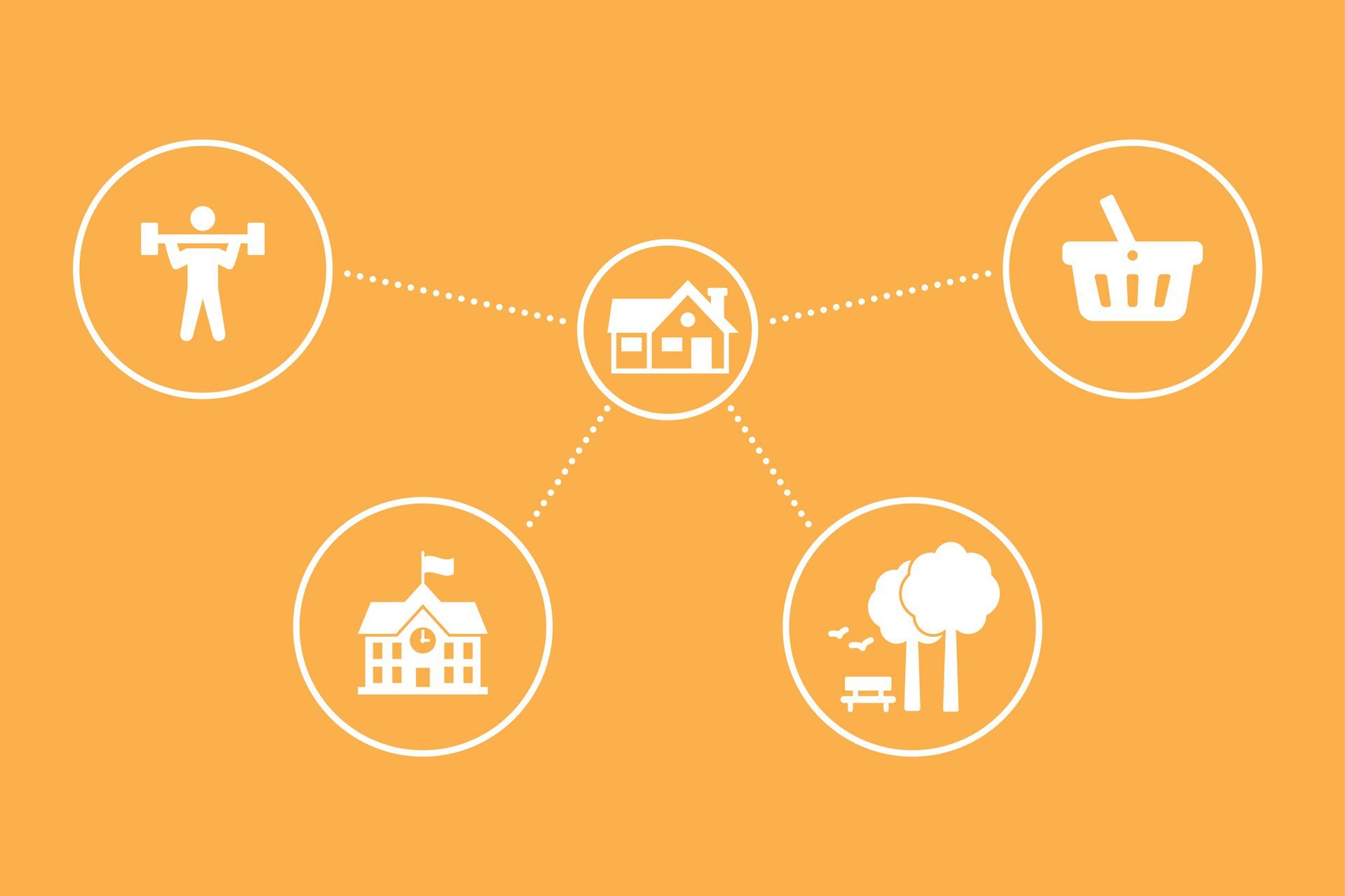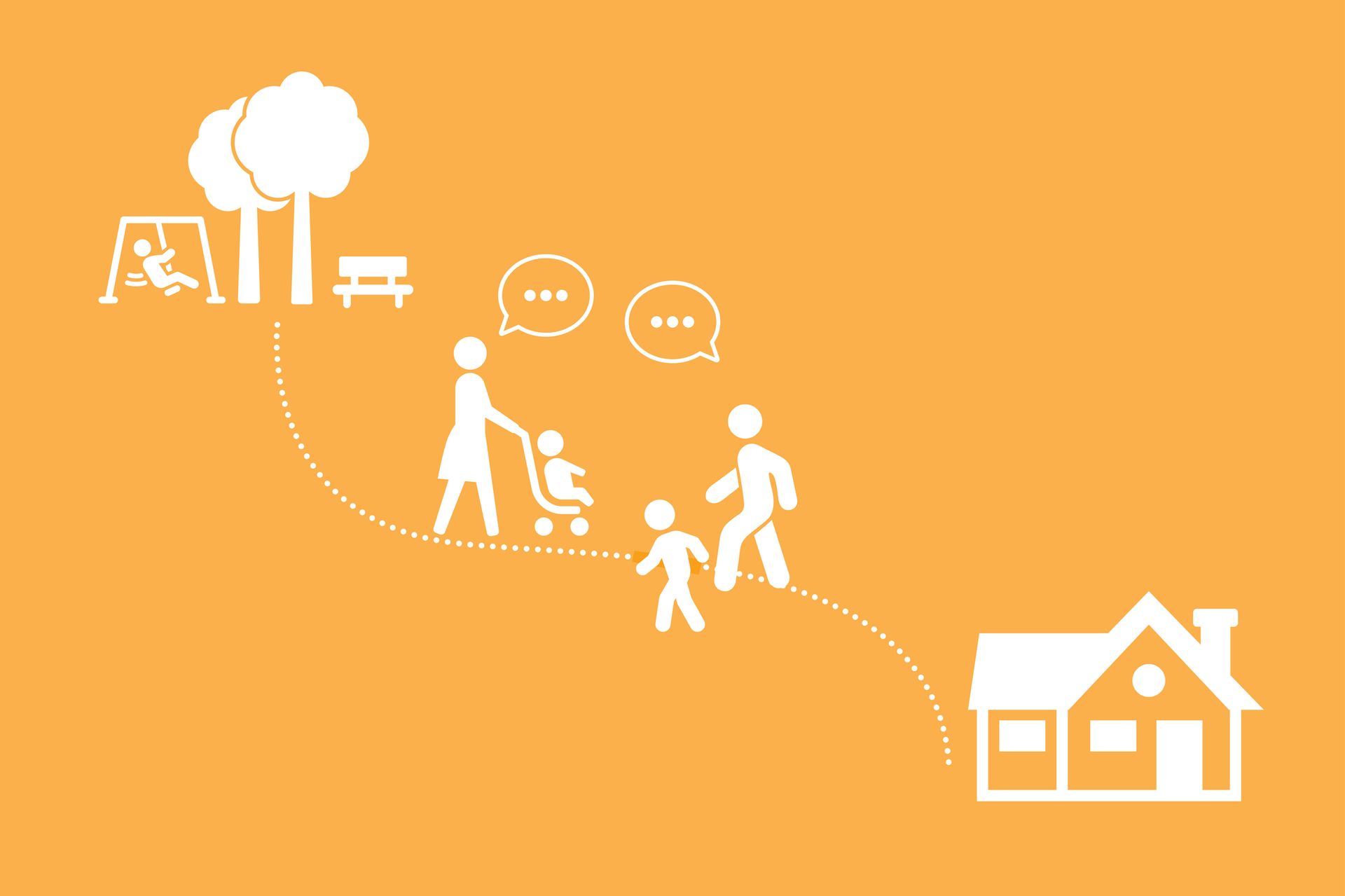Sense of Place
As Australian cities grow and grow, finding a local anchor point – a sense of place – can be more and more difficult. Walkable environments are a key way of enhancing a sense of community as they help people bump into each other in the best way possible. Social capital can be encouraged and facilitated through these walkable distances, providing opportunities for residents to meet at the shops, interact on the train platform and engage in their neighbourhood’s schools, community gardens or local neighbourhood house.
Sense of place is about residents’ relationship with their neighbourhood as well as each other, and this section outlines ways such connections can be enhanced and fostered to meet residents’ needs at all stages of their lives.
Authors: Alex Kleeman, Julianna Rozek, Dr Lucy Gunn, Professor Billie Giles-Corti.
Detailed further guidance on this design feature is available on our Publications and Policies page.
Neighbourhood designs that entice people outdoors through diverse local destinations and connected routes encourage and create natural surveillance which enhances and promotes neighbourly interactions, social capital and sense of community
What do we mean by "sense of place"?
The term “sense of place” describes how a person feels about a place and their relationship with that place. These feelings are related to the physical characteristics of the environment and are developed over time. The physical setting, activities undertaken within that setting, and attachment come together to create a sense of place. [1] Specifically, people are drawn to and want to be part of places to which they have positive feelings. Key attributes that contribute to ‘place making’ include: [1]
Access and Connections:
- Pedestrian-friendly and well-connected, permeable street design
- Accessible using a range of transport options
- Connected to nearby destinations, attractions and the wider area
Uses and Activities:
- Convenient for both local daily living activities and larger organised events
- Facilitates a range of activities
- Used during different times of day and throughout the year
Comfort and Image:
- Is attractive and appealing
- Has a sense of character and history
- Feels safe, clean and comfortable
Sociability:
- Promotes co-operation and neighbourliness
- Welcoming and non-exclusionary
- Connects people with other people
Sense of place connects people to places and is commonly discussed in terms of:
- Social connections - “our relationships with others and the meaningful, positive interaction between people”. [4 p.4]
- Sense of community - “a feeling that members have of belonging and being important to each other and a shared faith that members’ needs will be met by the commitment to be together” [5]
- Social capital- “the social networks and interactions that inspire trust and reciprocity among citizens.” [6]
For mothers with young children, local amenities provide opportunities to interact with other residents and families, including parents and children, helping to build a sense of belonging in a new neighbourhood
Climbing stairs has a range of positive health benefits. People who climb at least 20 floors per week have a 20% lower risk of stroke
Download the Sense of Place infographic
Stay informed. Sign up to our newsletter.
I agree that I have read and I accept the Heart Foundation's Privacy Statement.


